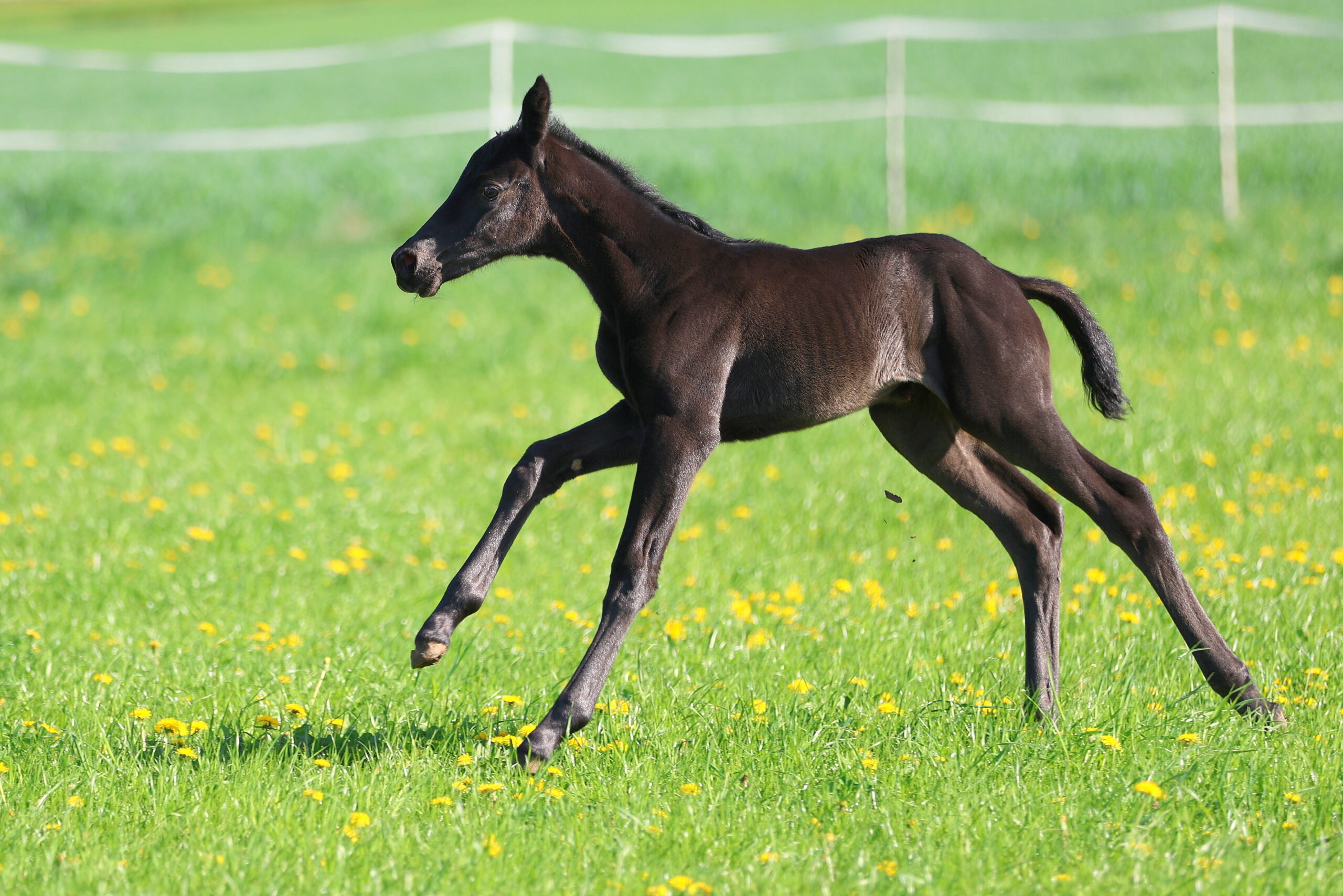Home > Horse Care > 3 ways to make your property “foal friendly”
3 ways to make your property “foal friendly”
- November 17, 2025
- ⎯ Christine Barakat
If your mare is due to foal soon, your to-do list is probably as long as your excitement and anticipation are high. But as you prepare for the new arrival, make sure you inspect the space where the baby will spend the first few weeks of his life. A little time spent “foal proofing” now may prevent an accident later.
1. Search for sharp edges.
Start by searching the stall for any splintered wood or other protruding hazards, especially at the level of a foal’s head, which is around your hips. It might help to get down on your knees to see the walls from his point of view. Sharp edges on bucket and latch hardware are notorious for injuring tiny nostrils, mouths and eyelids. Foals do not have a good menace response, meaning they won’t pull their head back if something approaches their eyes.

2. Look for trapping hazards.
Foals are, by nature, curious little creatures so expect them to thoroughly investigate their surroundings, sticking their noses or hooves in every crevice. Seal any crack or gap in a stall wall that is big enough to entrap a tiny hoof. A good rule of thumb is that if you can stick your hand in it, you need to close it up.
3. Make sure your fencing is adequate.
If your mare will be foaling in a pen or paddock—or even kept in one as her due date draws near—measure the gap between the bottom rail and the ground. Anything more than one foot high can allow a newborn foal to roll out and be separated from his dam. Not only will the mare panic, but if the foal hadn’t nursed yet, he might be unable to reach his dam to get her colostrum, the extra-rich first milk that contains antibodies to bolster his immune system. This may lead to a potentially fatal condition called failure of passive transfer.
If you can’t close the gap under your paddock fence, find another place to house your expectant mare. And don’t assume you’ll be able to move your mare from the paddock into a stall before she foals. The average equine gestation period is around 340 days but can range from 320 to 365 or more days. Mares often wait until they are alone and undisturbed to deliver, but it wouldn’t be unusual for a foal to arrive weeks before you expect it. If you can’t close the gap under your paddock fence, find another place to house your expectant mare.
Don’t miss out! The free weekly EQUUS newsletter delivers practical and interesting horse health information right to your in basket! If you’re not already receiving the EQUUS newsletter, click here to sign up. It’s *free*!





